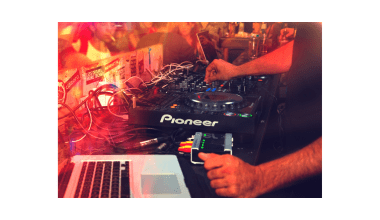If you’ve ever held a physical album or scrolled through a music library, chances are you’ve come across album artwork. But what is album artwork exactly? Simply put, it’s the visual representation of an album’s identity, displayed on its cover or digital platform. Album artwork can be a photograph, an illustration, or even abstract designs—anything that visually complements the music inside. Let’s dive deeper into what makes album artwork so essential and how it impacts the music world.
The Purpose of Album Artwork
Album artwork is more than just decoration; it serves several key purposes. First, it creates a visual identity for the music. For example, the cover art of Pink Floyd’s The Dark Side of the Moon is iconic, instantly recognizable, and deeply tied to the album’s themes.
Additionally, album artwork acts as a marketing tool. A striking cover can catch your eye in a record store or on a streaming platform, encouraging you to give the music a listen. In essence, it bridges the gap between visual art and auditory experiences.
A Brief History of Album Artwork
To understand album artwork better, we need to look at its history. In the early 20th century, albums were sold in plain sleeves with minimal designs. The concept of album artwork as we know it today emerged in the 1940s, thanks to Alex Steinweiss, a graphic designer who believed that music deserved visually appealing covers.
By the 1960s and 1970s, album artwork became a cultural phenomenon. Think about The Beatles’ Sgt. Pepper’s Lonely Hearts Club Band or The Rolling Stones’ Sticky Fingers. These covers didn’t just package music; they became works of art in their own right.
Why Album Artwork Still Matters in the Digital Age
In today’s digital music era, you might wonder if album artwork is still relevant. Spoiler alert: it absolutely is! While streaming platforms have replaced physical albums for many, cover art remains a key aspect of the listening experience. Platforms like Spotify and Apple Music prominently display album artwork, reinforcing its role as a visual anchor for the music.
Moreover, in a world where music is often consumed quickly, album artwork helps an artist stand out. A memorable cover can make you stop scrolling and hit play. It’s a gateway to the music’s mood, story, or vibe.
Iconic Examples of Album Artwork
Let’s talk about some famous album artwork that has stood the test of time:
- Abbey Road by The Beatles: Who doesn’t recognize the image of the Fab Four crossing a zebra-striped road?
- Nevermind by Nirvana: The underwater baby reaching for a dollar bill is unforgettable.
- Thriller by Michael Jackson: This cover, featuring Jackson in a white suit, is as legendary as the music it represents.
These examples show how powerful album artwork can be. It’s not just about aesthetics; it’s about creating a lasting impression.
How Album Artwork Is Created
Creating album artwork is a collaborative process that often involves graphic designers, photographers, and sometimes the artists themselves. Here’s a simplified breakdown:
- Concept Development: The artist or their team decides on a theme that aligns with the music.
- Design: Graphic designers or illustrators bring the concept to life.
- Approval: The final design goes through multiple rounds of feedback before it’s approved.
Thanks to digital tools, the possibilities for album artwork are endless today, from hand-drawn illustrations to AI-generated designs.
The Relationship Between Album Artwork and Music
Think of album artwork as the music’s visual counterpart. A dark, moody cover might hint at introspective or melancholic songs. Conversely, bright and colorful artwork suggests upbeat and energetic tracks. The goal is to create harmony between the visual and auditory elements, enhancing the overall experience for the listener.
For example, Tyler, The Creator’s IGOR features minimalistic, bold artwork that reflects the album’s experimental sound. Similarly, Billie Eilish’s WHEN WE ALL FALL ASLEEP, WHERE DO WE GO? uses eerie visuals to match its haunting tones.
Album Artwork as a Collectible
For music enthusiasts, album artwork isn’t just about the music; it’s also about collecting. Vinyl records, in particular, have seen a resurgence in recent years, partly due to their large, tangible covers. Owning a vinyl album is like owning a piece of art. Many collectors frame iconic covers and display them as decor.
The Role of Technology in Album Artwork
Technology has revolutionized how album artwork is created and consumed. Tools like Photoshop, Illustrator, and 3D modeling software allow artists to experiment with new styles and techniques. Augmented reality (AR) is also being used to create interactive album covers. Imagine pointing your phone at an album cover and watching it come to life with animations or hidden content!
How to Appreciate Album Artwork
You don’t need to be an art expert to appreciate album artwork. Here are some tips:
- Take a Closer Look: Spend time examining the details. What do you notice?
- Think About the Music: How does the artwork relate to the songs?
- Research the Artist: Learning about the creator can add depth to your appreciation.
Final Thoughts: Why Album Artwork Matters
Album artwork is much more than a pretty picture. It’s a vital part of the music experience, telling stories, setting moods, and creating connections. Whether you’re streaming your favorite album or flipping through a vinyl collection, take a moment to appreciate the artistry behind the cover. After all, it’s a gateway to the music’s soul.
Related Articles:
For further reading, explore these related articles:
- How to Cancel SoundCloud Go: A Step-by-Step Guide
- Apple Music Stats Tracker: Why You Need One and How to Get Started
For additional resources on music marketing and distribution, visit DMT Records Private Limited.





